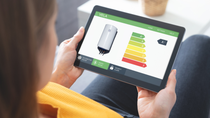Performance Polymers
Ultrasim® Polyurethane Simulation
PU foaming simulation is a powerful tool to boost your part and process development. Learn how our tools can be used for identifying processing issues early-on and how to predict the final performance of your part even before building a first prototype. Benefit from our experience and track-record of successfully supporting customers from all industries for more than a decade. Gain direct access to our simulation infrastructure via our easy-to use web apps "Foaming" and "VELA".
Optimize Foam Pouring in Open-Mold Processes
Back-foamed instrument panels in luxurious car interiors combine complex signature design, challenging haptics requirements, and functional integration. With our simulation capabilities for both open and closed mold processes you can validate part and mold design, check production line compatibility, and improve ongoing manufacturing.
Open-mold processes offer great flexibility but trials to figure out the best pouring path can be time-consuming and expensive. Simulating and comparing several pouring scenarios can help you find the best overall process, while also taking other factors into account, like mold tilting angles. Using these results, you can make sure your mold design is feasible, vents and seals are correctly placed and sectioned, so that you can meet the requirements of the final product.
Finding the Ideal Venting Concept
In PU foaming applications, like other low-pressure processes, it is of great importance to allow air to evacuate the mold cavity, while also limiting mass loss and formation of flashes. Correct placement and dimensioning of vents and seals is key to prevent air pockets, voids, and other flaws, and ensure the foam can distribute freely and achieve a good part of uniform quality.
The ideal filling depends on the geometry of the compartment, the rheological properties of the PU mixture, and characteristics of the mixing head. Taking these factors into account, our foaming simulation can predict the density distribution based on the filling patterns and integral skin / core characteristics of the individual system. These results can further be used to derive insulation and mechanical behavior of your part as described in the next sections.
Consult with an expert
Self-service solutions:


